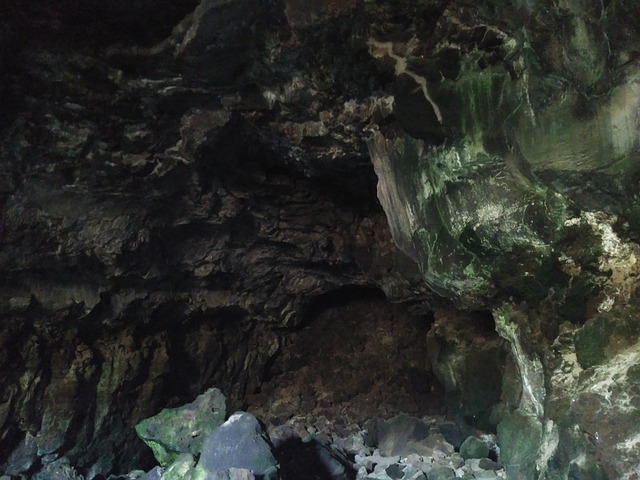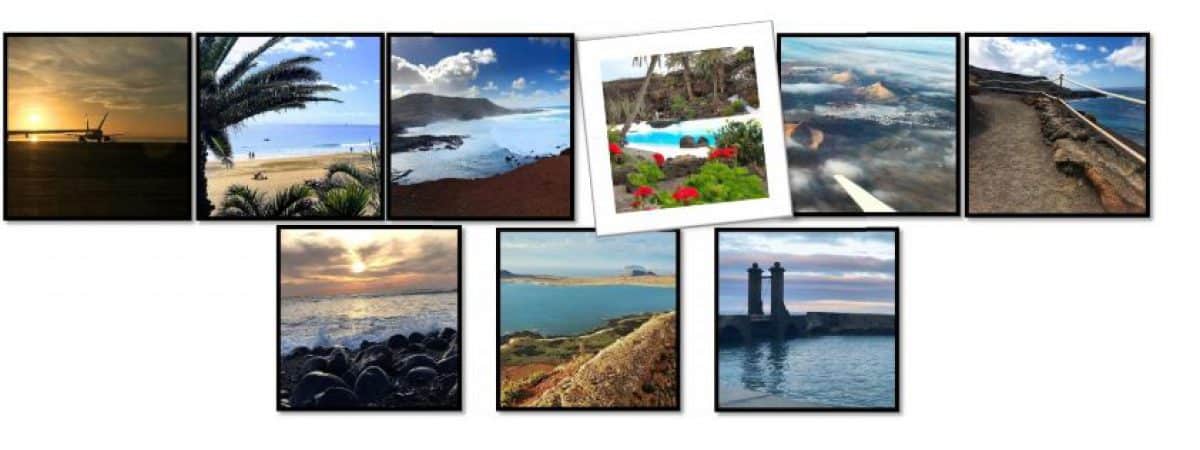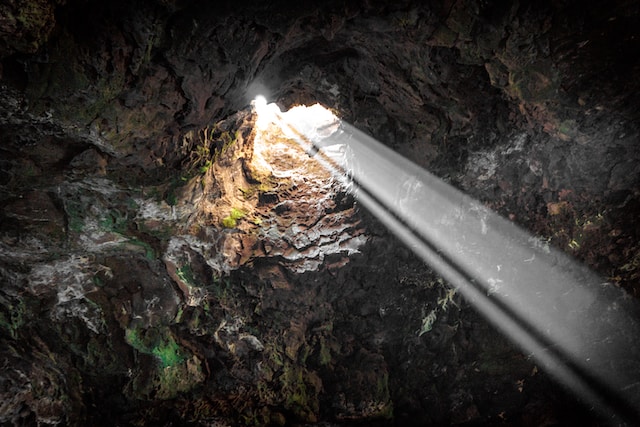This post is also available in:  Español (Spanish)
Español (Spanish)
The “island of volcanoes” is full of surprises, among them, we find the hidden caves of Lanzarote. Perhaps when you arrive at the island you think of the beaches, the lunar landscape, and the volcanoes. But there’s much more, and here we show you some of those surprises you will find when you arrive at this destination.
Introduction to the Hidden Caves of Lanzarote
You may have heard before about the Cueva de los Verdes or the Jameos del Agua. Both are among the excursions in Lanzarote that you can’t miss during your visit. However, if you like speleology, there’s much more that the island can offer you.
Most caves and caverns in Lanzarote are the result of volcanic activity on the island. Some of them once served as a refuge for locals to hide from pirate attacks.
There are caves with easy access and signs for visitors, such as the Cueva de los Verdes. And others, on the other hand, are a real challenge for those who wish to enter. For this kind of tourism, it is always important to be accompanied by people who know the routes.
If you are an adventurer who likes speleology and geology, Lanzarote will undoubtedly be a great destination for you. That’s why we want you to know about the hidden caves of Lanzarote.
The most important caves of Lanzarote
The volcanic activity in Lanzarote has given us natural wonders on the island. For example, the lunar landscape of the Timanfaya Park, the black sand beaches, or the conditions of the soil that make the wines of La Geria possible.
Among these gifts from nature are the caves of Lanzarote. Here we tell you a little about the two most well-known ones.
The Jameos del Agua
The cultural and tourism centre we know as Jameos del Agua is a natural space intervened by the Lanzarote artist, César Manrique. It is part of a volcanic tube that was formed by the eruptions of the Corona volcano.
The Jameos del Agua consists of three openings: Jameo Chico, Jameo Grande and Jameo de la Cazuela. Inside this space, you will find the auditorium, a restaurant, a bar-cafeteria and the Casa de los Volcanes Museum.
Cueva de los Verdes
The Cueva de los Verdes shares the origin in the same volcanic tube as the Jameos del Agua, and it is estimated to be 20,000 years old. The tunnels extend for more than 7 kilometres.
The cave is adapted for visitors and was also intervened by Manrique, together with the artist Jesús Soto. This work allowed the cave to be prepared for the public’s visit. They were in charge of the lighting and the interior tour.
Inside the Cueva de los Verdes, you will find areas such as the Moorish gate, the aesthete’s room and the throat of death. In addition, there is a small auditorium which, as in the Jameos del Agua, takes advantage of the acoustics of the place.

Exploring the Hidden Caves of Lanzarote
The Jameos del Agua and the Cueva de los Verdes are the most popular caves in Lanzarote. And both are part of the places that you should not miss on the island. But the volcanic activity and the geology of the island gave us other similar formations that are less popular.
Although they do not have the same recognition, they are worth visiting. Keep in mind that some are difficult to access and that is why they are not so visited.
Hidden Cave in Órzola
In the depths of the cliffs of this fishing village, there is a hidden cave, which can only be accessed when the tide is low.
It is located on the beach of Órzola and its interior has been shaped by time and the sea. It is not a deep cave, but it is ideal for taking photos from the inside.
Volcanic Tube of La Corona
It is located to the north of Lanzarote and is more than 6 kilometres long. It was formed due to the eruptions of the La Corona volcano. Along the tube, there are several jameos, which were created when the roof collapses.
Both the Jameos del Agua and the Cueva de los Verdes are part of the volcanic tube, but there are many others. The last section is flooded by the sea and is known as the Tunnel of Atlantis.
The Cave of the Goats
If you are doing a hiking route through El Bosquecillo, we recommend you visit the Cueva de las Cabras. Located on a cliff facing the sea, this cave offers impressive views.
To get there, you have to cross a slippery path, so you have to be careful. Once inside, you will find several windows from which you can enjoy the view to the sea.
Cave of Las Breñas
It is also known as Wind Tunnel, and it is a volcanic tunnel with a length of 950 metres. The journey is uncomfortable from the very entrance, as you have to do it bent over. Only in some rooms is it possible to stand up.
The Cave of the 7 Lakes
It is near the Cueva de los Verdes, but -unlike this one- it is not adapted to be visited. The cave of the 7 lakes is part of the Tunnel of Atlantis, and its name is due to the lakes of crystal clear water inside.
The cave is a subterranean jewel, but it is difficult to access, and you must go with a guide who knows it.
The Cave of the Doves
This is the Natural Monument of the Cave of the Naturalists, also known as the Cave of the Doves.
It is located near Masdache and comprises 1600 kilometres of gallery. It is a place of geological and speleological interest. The tour can be done in 30 minutes, but precautions must be taken as the path is irregular.
Conclusion: Lanzarote, a Treasure of Underground Adventures
Apart from the caves we mentioned, there are many others in Lanzarote, such as the Ana Viciosa Cave or the Skeleton’s Cave. There are even underwater grottos that can be visited, such as the Prawn Cave.
If you are an adventurous traveller and you like speleology, dare to explore the hidden caves of Lanzarote. Each of these places will teach you a little more about the nature of the island.
This post is also available in:  Español (Spanish)
Español (Spanish)

